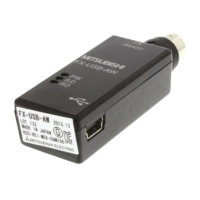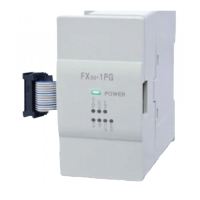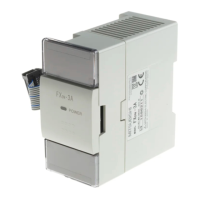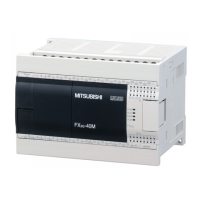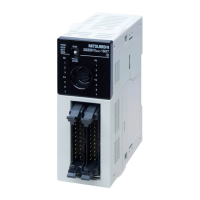7 Applied Instructions
7.6 High Speed Processing
279
FXCPU Structured Programming Manual
(Basic & Applied Instruction)
1
Outline
2
Instruction List
3
Configuration of
Instruction
4
How to Read
Explanation of
Instructions
5
Basic Instruction
6
Step Ladder
Instructions
7
Applied
Instructions
8
Interrupt Function
and Pulse Catch
Function
A
Relationships
between devices
and addresses
4. Specifying input and output variables
When handling 32-bit data in a structured program, a 16-bit device cannot be specified directly as in the case
of a simple project. Use a label to handle 32-bit data.
A 32-bit counter can be specified directly as it is a 32-bit long device.
Use a global label to specify a device.
5. Precedence of DHSCS, DHSCR and DHSZ instructions to one particular high speed counter
→ Refer to caution 6 in "Common cautions on using instructions for high speed counter" which is
described later.
6. Reset operation by an external terminal
→ Refer to caution 5 in "Common cautions on using instructions for high speed counter" which is
described later.
7. Other cautions on use
→ Refer to caution in "Common cautions on using instructions for high speed counter" which is
described later.
Program examples
With regard to the current value of a counter, different outputs (Y) are arbitrarily set to ON by two values.
C255
Y010
Y011
0
...
99
100
101
...
149
150
151
DHSCS
EN
s1
s2
ENO
d
M8000
RUN
monitor
Set the maximum counting value of high speed counter.
CN251=K100
→
Y010=ON
CN251=K150
→
Y011=ON
DHSCS
EN
s1
s2
ENO
d
CN251
CN251
Y010
Y011
VAR_01
*1
*1. VER_01 is a global label and is defined as K100.
*2. VER_02 is a global label and is defined as K150.
[Structured ladder]
OUT_C_32
EN
CCoil
CValue
ENO
CC251
K2,147,483,647
VAR_02
*2
[ST]
OUT_C_32(M8000,CC251,K2147483647);
DHSCS(M8000,VAR_01,CC251,Y010);
DHSCS(M8000,VAR_02,CC251,Y011);
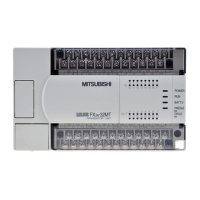
